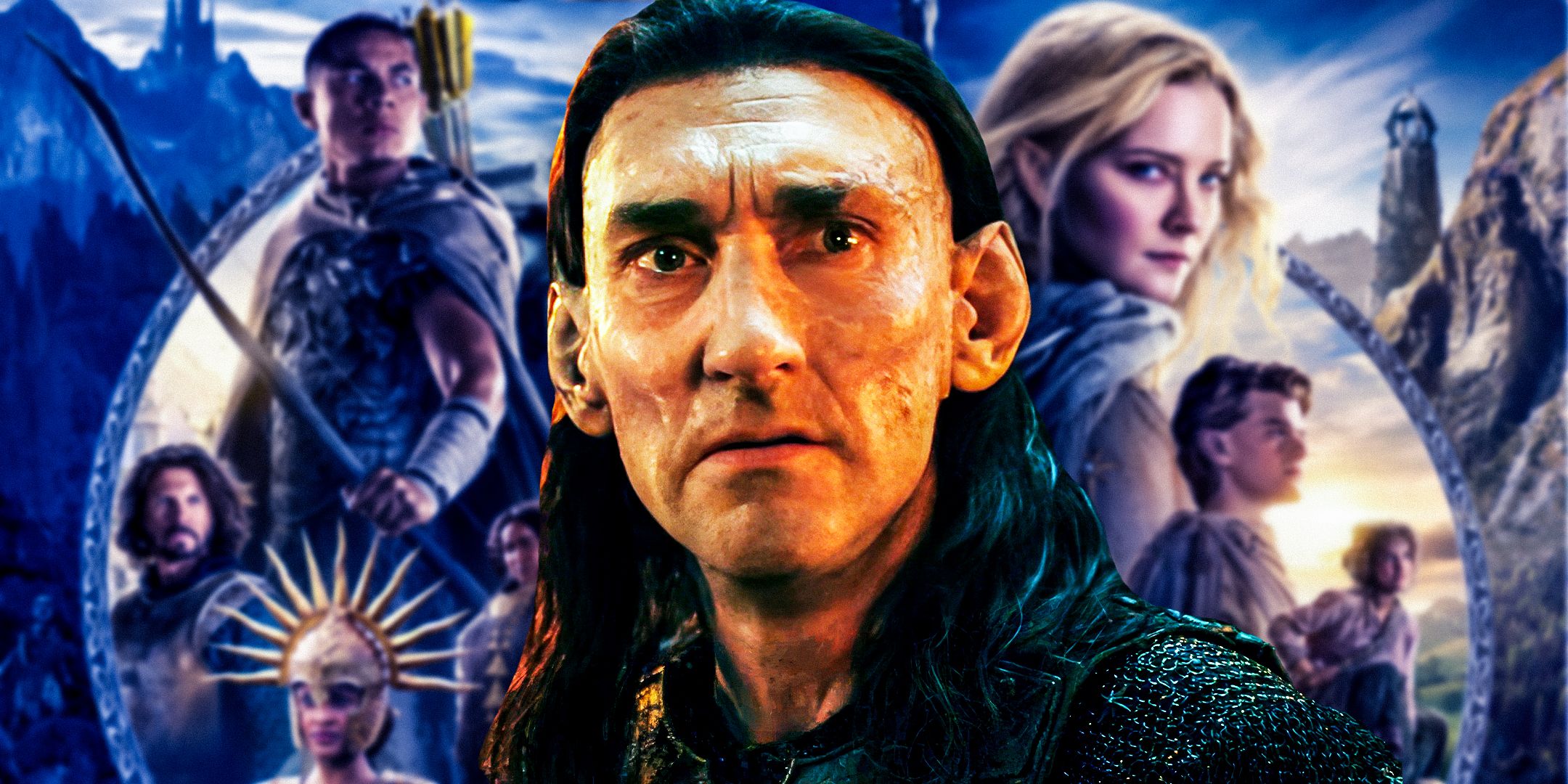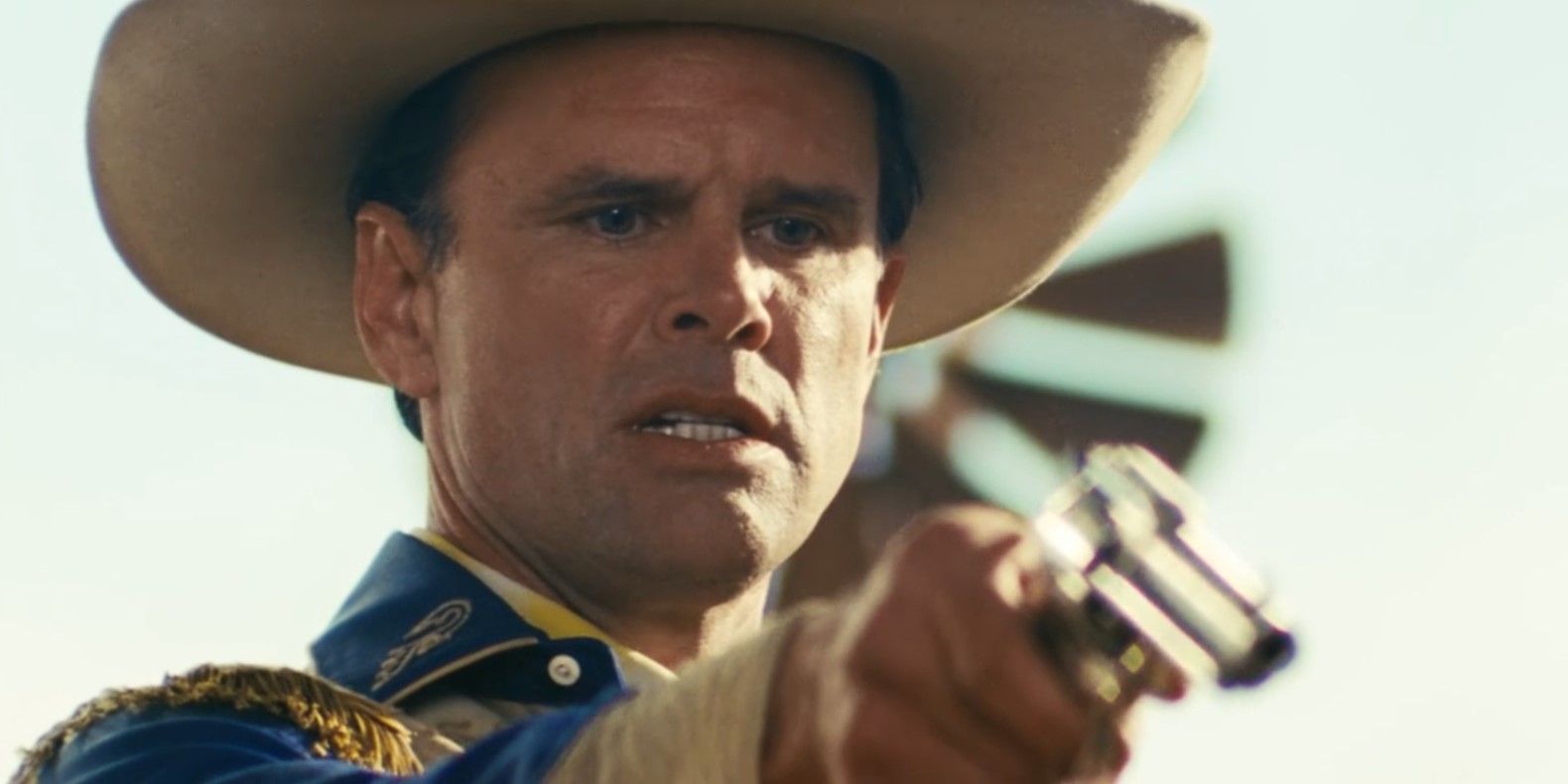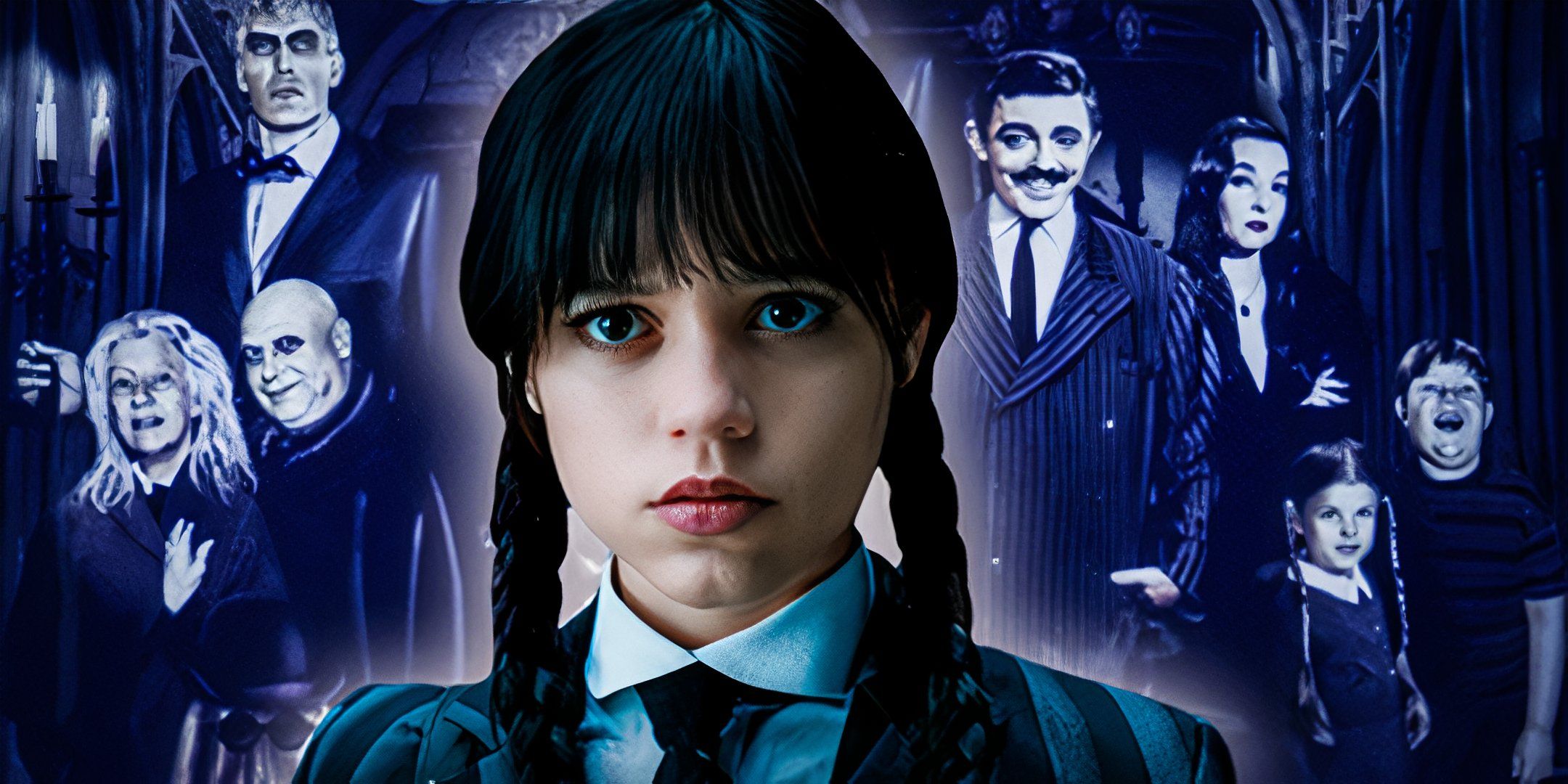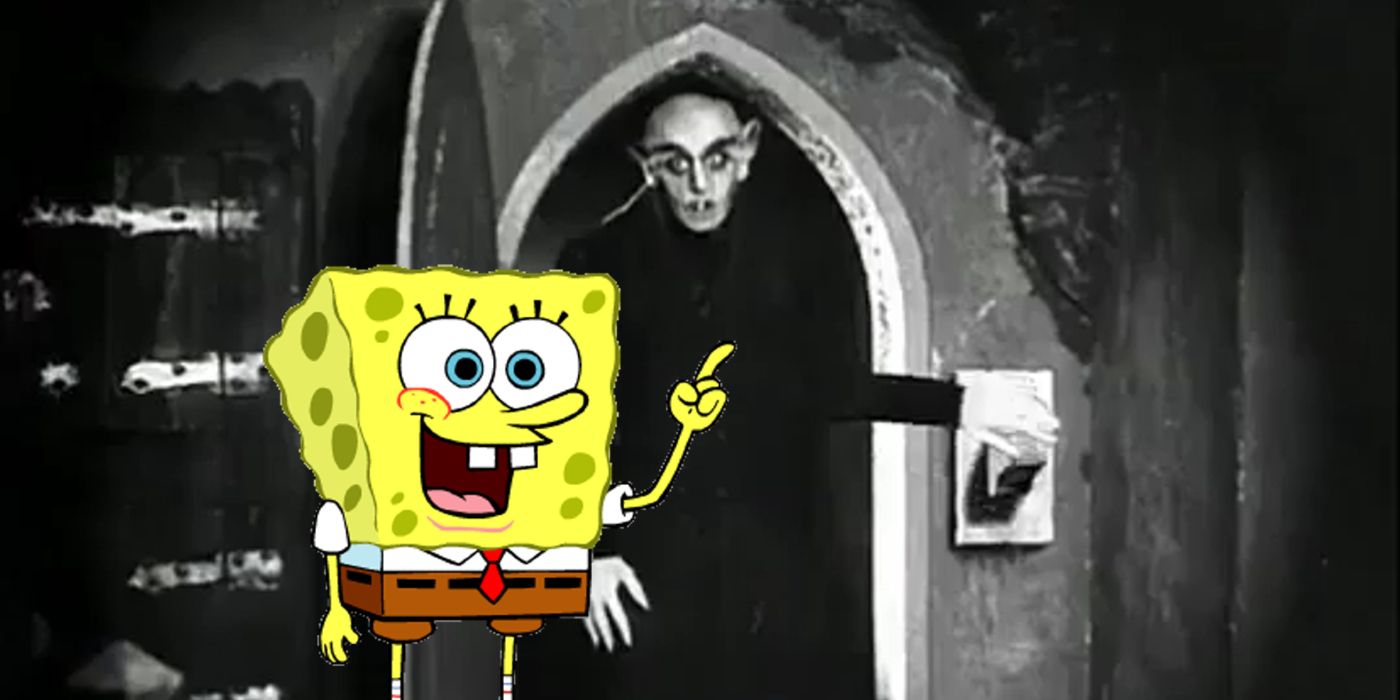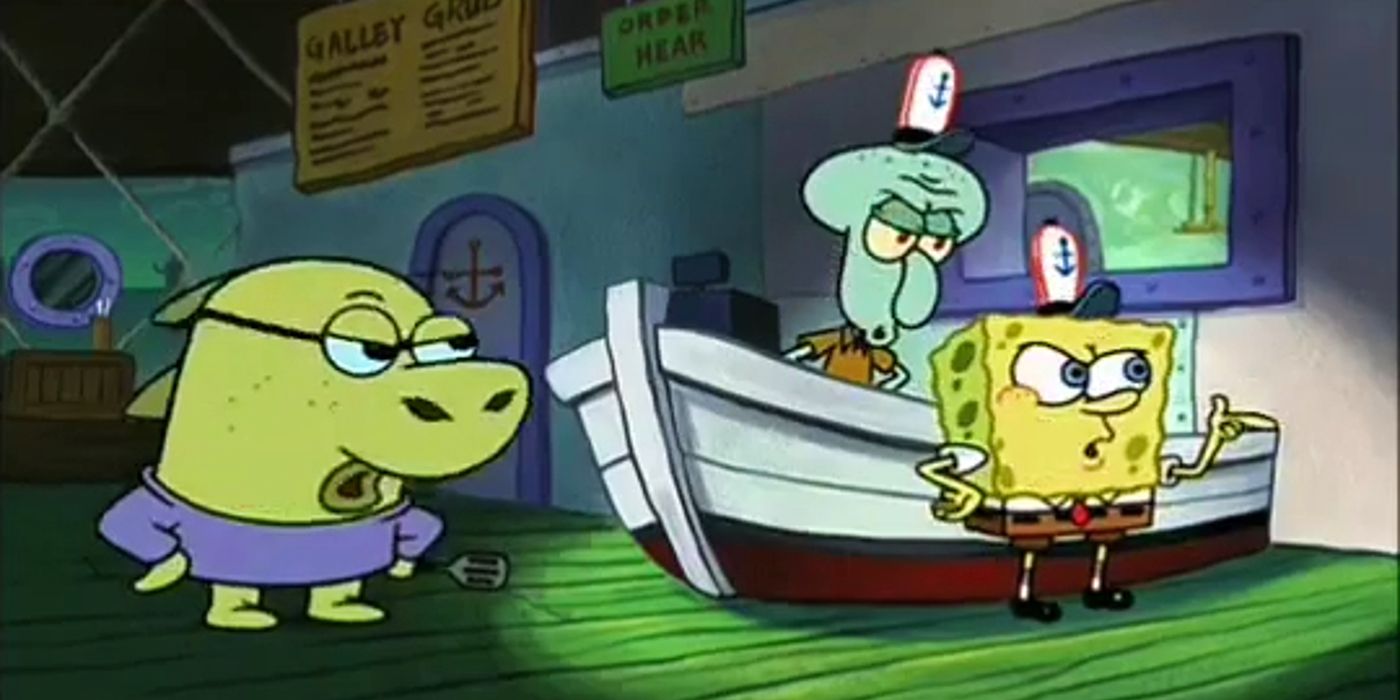SpongeBob SquarePants writer Jay Lender explains the origins behind the show's bizarre Nosferatu cameo. The Nickelodeon animated comedy series first premiered in 1999 and is still on the air, currently in the middle of season 13. The show received praise from critics on the way to becoming immensely popular with audiences of varying ages, particularly for its unusual sense of humor.
One notable example of its strangeness comes in SpongeBob season 2 episode 16, titled "Graveyard Shift." The story sees SpongeBob and Squidward forced to keep the Krusty Krab open 24 hours, and to entertain himself, Squidward tries to frighten his chipper colleague with a story about the "Hash-Slinging Slasher," only for each of the three warnings he invents to actually happen. Though both are temporarily terrified, two of these phenomena prove to have perfectly normal explanations, while the third - flickering lights - is attributed to Count Orlok from the 1922 silent film Nosferatu, who the characters scold as if he is a known prankster.
This was the first encounter with the horror cinema classic for many young viewers, and in an interview with Polygon, Lender reveals how the absurd bit came to be. The SpongeBob SquarePants writer says there was originally a character named Floorboard Harry introduced earlier in the episode, with feeding him being one of SpongeBob's responsibilities, and that he would have been the one flicking the light switch at the end. When the first joke ended up being cut, however, Lender reworked the ending by drawing on a childhood memory of seeing a Nosferatu image in the magazine Famous Monsters of Filmland. Check out his explanation below:
Stuff would appear in this magazine that I couldn’t track down, but I could be aware of it. So I could see that [old genre films like] This Island Earth existed, but I couldn’t actually see them unless it showed up on TV. They would show a still from Nosferatu. And it was always that still of him standing in the doorway. So my first experience with Orlok and with that image is as this disjointed non sequitur. When the moment came that I needed to come up with a replacement horror non sequitur, that image was already in that slot in my brain. What’s interesting is that because of SpongeBob, for 20 years, everyone else’s first experience with Orlok came as a weird disjointed non sequitur horror image too.
SpongeBob season 2 episode 16 remains one of the show's most acclaimed entries, and the Nosferatu gag is often cited as a key reason why. Lender goes on to emphasize the sheer impact of this joke, becoming an entire generation's formative interaction with the silent film, which this year enjoys the 100th anniversary of its release. He also jokes that his decision to have SpongeBob say the title of the film instead of the character's name, both because of Nosferatu's recognizability and because it made a better fit for the sing-song line delivery, has resulted in years of messages from "trolls" correcting him.
While Nosferatu is the type of pop-culture icon that most people will be aware of despite never having seen the original film, it is certainly amusing that SpongeBob was the first point of contact for so many. That could change for the next generation, however, as filmmaker Robert Eggers wants to remake Nosferatu with Anya Taylor-Joy, a project that has proven difficult to get off the ground. That would be a far more serious touchstone, but given the reach of this cartoon gag, it may take more than one might expect to get audiences to think of the vampire as anything but "that guy from SpongeBob."
Source: Polygon


